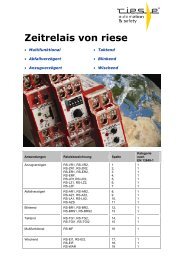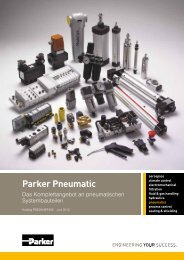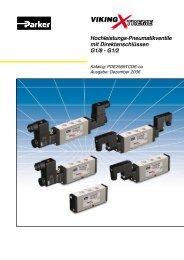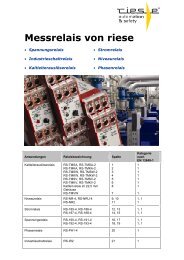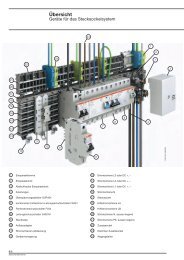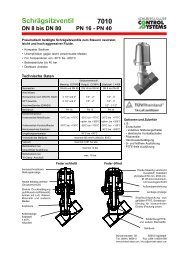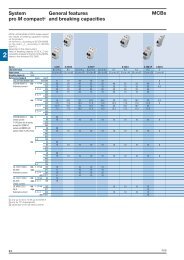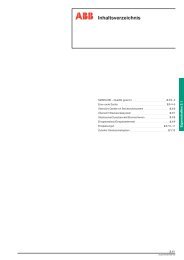Technical details System pro M compact®
Technical details System pro M compact®
Technical details System pro M compact®
- No tags were found...
You also want an ePaper? Increase the reach of your titles
YUMPU automatically turns print PDFs into web optimized ePapers that Google loves.
<strong>System</strong><strong>pro</strong> M compact ®<strong>Technical</strong> <strong>details</strong>Functions and classifi cation criteriafor RCDsRCDsThe tripping time is not adjustable. It is set according to a predetermined time – current characteristicwith an intrinsic delay for small currents, tending to disappear as the current grows.IEC/EN 61008 and 61009 establish the tripping times relative to the type of RCD and the IΔn.Type AC In [A] IΔ [A] Tripping times (s)xcurrents1xIΔ 2xIΔ 5xIΔ 500AGeneric Any Any 0.3 0.15 0.04 0.04S (selective) ≥25 >0.030 0.13-0.5 0.06-0.2 0.05-0.15 0.04-0.15The indicated maximum tripping times are also valid for A type RCDs, but increasing the currentvalues of factor 1.4 for RCDs with IΔn > 0.01 A and of factor 2 for RCDs with IΔn ≤ 0.01 A.The range of ABB RCDs also includes AP-R (anti-disturbance) devices which trip according to thelimit times allowed by the Standards for instantaneous RCDs. This function is due to the slight trippingdelay (ap<strong>pro</strong>x. 10 ms) relative to the standard instantaneous ones.The graph shows the comparison of the qualitative tripping curves for:• a 30 mA instantaneous RCD• a 30 mA AP-R instantaneous RCD• a 100 mA selective RCD (type S)IΔn=30 mA IΔn=30 mA IΔn=100 mA1000500500300300300200150 1501301501004040406050Selective (type S)Instantaneous AP-RTripping times (ms)10 10 101000 0110 15 30 50 100 150 200 500 1000Instantaneous11Tripping current IΔn (mA)Note: this is a qualitative chart; it is referred only to industrial frequencies of 50-60 Hz.ABB11/63



